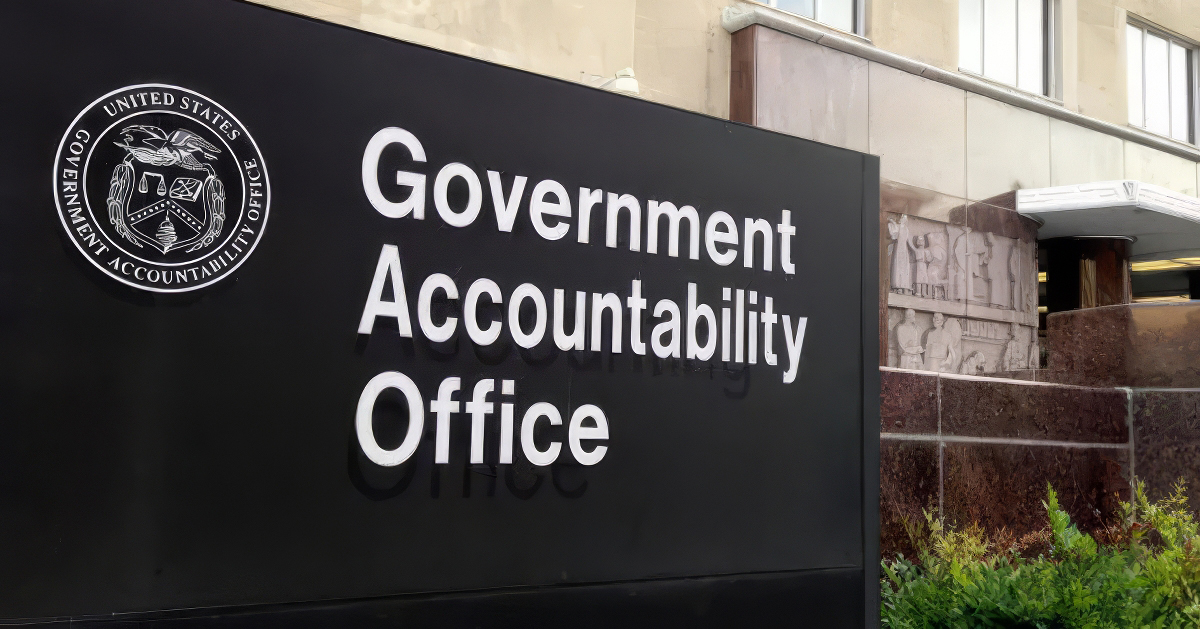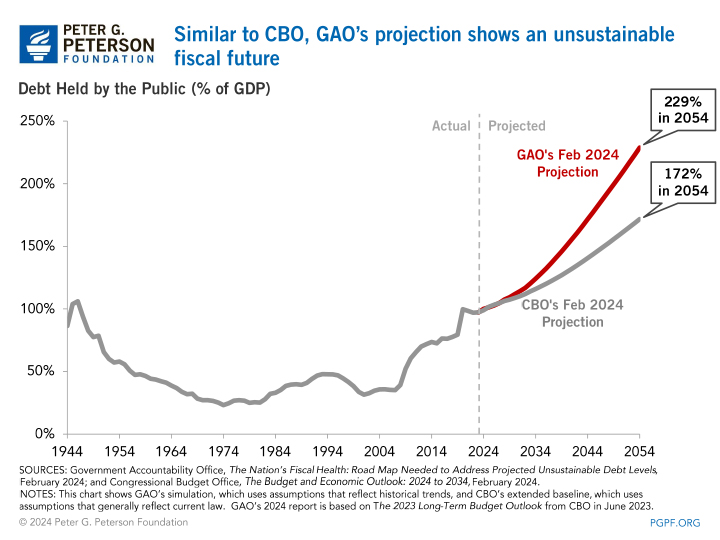You are here
New Report: National Debt Could More than Double the Size of the Economy in Just 30 Years

The Government Accountability Office’s (GAO’s) recent report on the nation’s fiscal health echoes analysis from the Congressional Budget Office (CBO) in warning that federal debt is on an unsustainable path. The report outlines the drivers of the country’s fiscal trajectory and calls for Congress to develop a plan to address that outlook.
Under GAO’s projections, debt held by the public would more than double over the next 30 years — rising from around 97 percent of gross domestic product (GDP) at the end of fiscal year 2023 to 229 percent in 2054. Those projections assume that current policies remain in place over the next decade and incorporate some simplifying assumptions about the relationships of various budgetary categories relative to the size of the economy over the following two decades.

Although GAO’s projections are based on estimates from CBO that were issued last year, their findings are similar to recent reporting from CBO that focuses on the structural factors driving an imbalance between spending and revenues:
- Growth in spending. GAO’s report highlights that federal spending in the future will be driven by increases in healthcare programs, Social Security, and net interest. Each of those spending categories are projected to grow faster than the economy over the next 30 years. By 2052, GAO estimates that federal spending on healthcare and Social Security combined will equal 13.9 percent of GDP, up from 10.6 percent in 2023. Much of that increase is associated with the aging population and the rapidly rising cost of healthcare. Net interest will grow substantially in the long term, reaching a historical high of 3.2 percent of GDP by 2030 and 7.9 percent of GDP by 2052 — becoming the largest “program” in the federal budget within the next 30 years as a result of mounting debt and higher interest rates.
- Inadequate Revenues. For projections through 2033, GAO adjusts CBO’s baseline values to reflect the expectation that current tax provisions slated to expire will be extended, decreasing revenues to federal coffers and widening the deficit. Such provisions include the individual income tax provisions that were part of the Tax Cuts and Jobs Act (TCJA) and are set to expire at the end of 2025. With those assumptions, GAO finds that over the 2024–2033 period revenues would average 17.0 percent of GDP. In 2034, GAO makes a simplifying assumption that revenues will remain constant at 17.4 percent of GDP, their 50-year historical average, through 2097.
In the report, GAO also reiterates their sentiment that Congress should create an effective fiscal plan to address the unsustainable fiscal trajectory, pointing to four pieces of legislation have been introduced in Congress in 2023 or 2024 to create a bipartisan fiscal commission. GAO believes an effective plan to address the fiscal trajectory would:
- Create fiscal rules and targets to manage the debt.
- Consider alternative approaches to the current debt limit.
- Assess all drivers of the debt.
- Address the funding gaps of Social Security and Medicare.
- Pursue other opportunities to improve fiscal responsibility through good government efforts.
GAO’s findings add to a chorus of nonpartisan evidence and analysis showing that action is needed to improve our fiscal outlook so that the country can meet future challenges, invest in the next generation, and build a strong and inclusive economy.
Related: 8 Startling Facts About the U.S. Fiscal Outlook
Image credit: www.gao.gov
